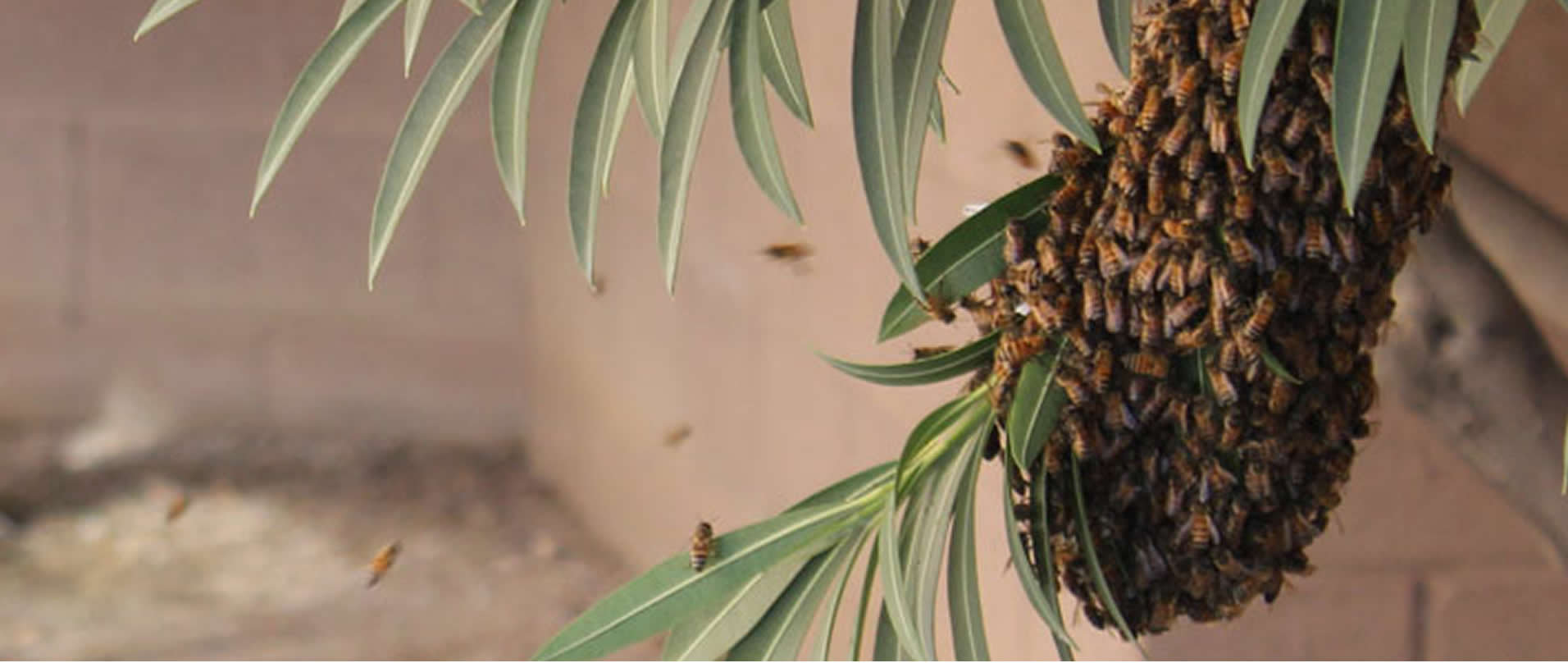Bees are commercially valuable and an important part of our ecosystem, but in the wrong place at the wrong time, wasps and bees can become a serious pest. If you think you may have a bee infestation, Truly Nolen can help you first determine whether you're actually dealing with wasps or bees or if it some other stinging insect. It is important to distinguish between the various wasps and bees because their potential as problems and their control differ.
The discovery of a bee nest or swarm generally creates a real sense of urgency. You may become anxious about the safety of your family, pets and property, and you will have an immediate desire to eradicate the bees. However it is important to remain calm. We understand your concerns and our professional technicians are ready to assist at a moment's notice.
The bees are eradicated, but the honeycomb remains on site. Without the bees to provide cooling, the wax liquefies and the honey runs down the walls. Mold soon forms on this sticky mess. Eventually an offensive odor develops from the decaying nest. Damage to your structure is occurring. The decaying nest is also a secondary attractant for other pests. Other bee swarms will try to re-infest the abandoned honey comb. Ants, cockroaches, carpet beetles, and other insects are highly attracted to the sweet honey and dead bee carcasses, so they infest the area too.
Wood boring bees nest as individuals, with each bee boring its own egg and nectar gallery. Carpenter bees bore through soft woods to lay eggs and protect their larvae as they develop. Female carpenter bees will chew a tunnel into a piece of wood to build a nest gallery. The tunnel openings usually look about one or two inches deep, but they can be up to 10 feet long. These tunnels usually have several rooms where the bees hold their eggs and food.
Different bee varieties have different nesting behaviors. Honeybees and bumblebees are social creatures that create large communal hives with nesting galleries and large honeycombs. Don't panic - most honeybee swarms are not dangerous if you leave them well alone and keep your distance. Bumblebees often nest in the ground, but can be found above ground around patio areas or decks. They will sometimes build their nests in attics or under roof beams. If disturbed, bumblebees will buzz in a loud volume, and they will aggressively defend their nests. Honeybee hives can be active for years, while bumble bee colonies die off each year..
